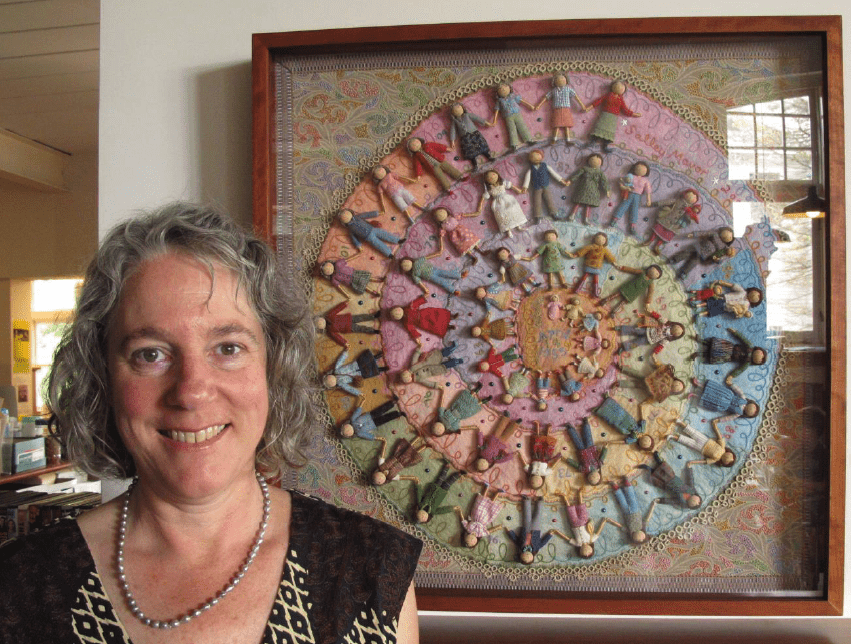
Salley Mavor, Wee Folk Studio, Featured Artist
We sat down with Salley Mavor of Wee Folk Studio to learn about her handwork creations. Salley creates embroidered artwork that’s photographed and reproduced in children’s books. Her pieces are truly remarkable. Read on to learn more!
How do you describe your art?
A needle is my tool, thread is my medium and stitches are my marks. My artwork is decorative and detailed, full of patterns and found objects, all bound together with stitching. I create sculptural scenes in bas-relief, much like miniature, shallow stage sets, with figures imposed on embellished fabric backgrounds.
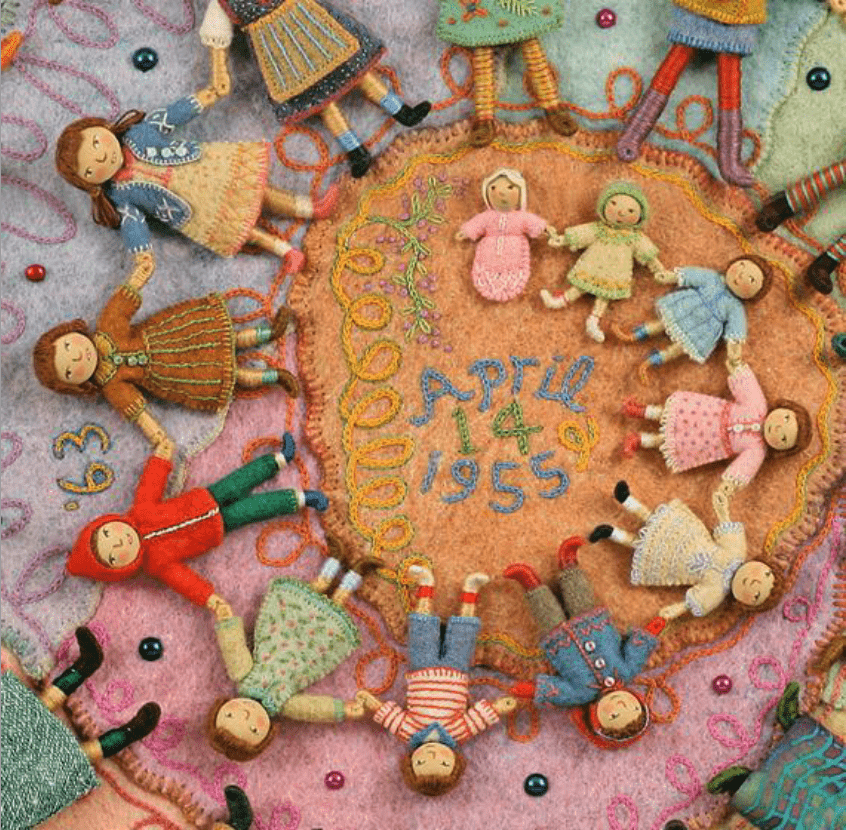
There is a certain over-the-top quality to my work that is unmistakable. What sets it apart is a combination of strong design, attention to the tiniest detail, humor, sophistication and fervent craftsmanship.
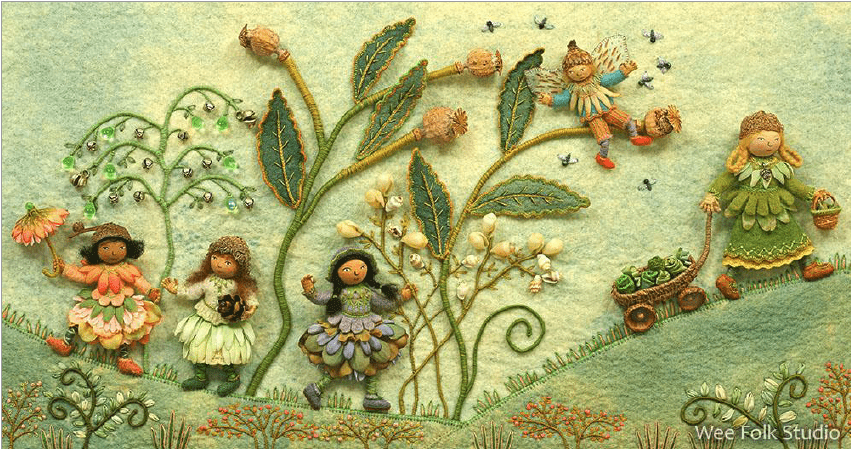
My art is very time consuming and not very practical, but that is part of what attracts me to this way of working. I sew, wrap, embroider, paint, carve and embellish in as many ways as I can—all by hand. Through the repetitive, tactile process, I find a calm satisfaction that helps me solve problems as I go. What I make and how I do it requires letting go of preconceived notions about needlework, fiber art, doll making and illustration. In addition to making stand-alone embroidered scenes, I’ve illustrated many children’s books and written how-to books about making wee folk dolls. Recently, I’ve broken away from safe and idyllic themes to explore what is happening in the real world. I want my work to connect with an audience that not only includes stitching enthusiasts and children, but also people who’ve never heard of fiber art.
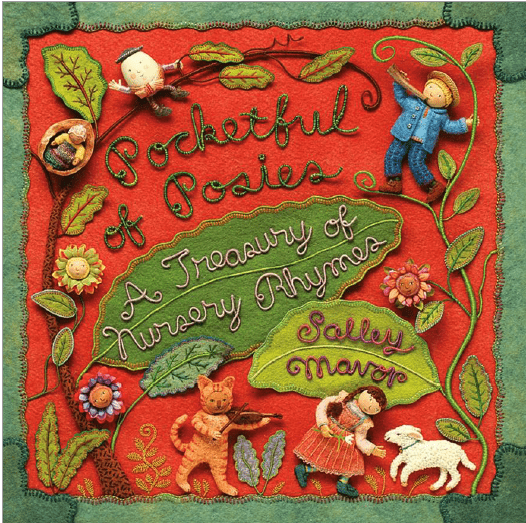
How did you get started with this type of artwork?
Another way of putting it would be, “Where did this doll-infested needle and thread universe come from?†It began at the height of the baby boom, in a family of introverts who were either making things or staring into space.
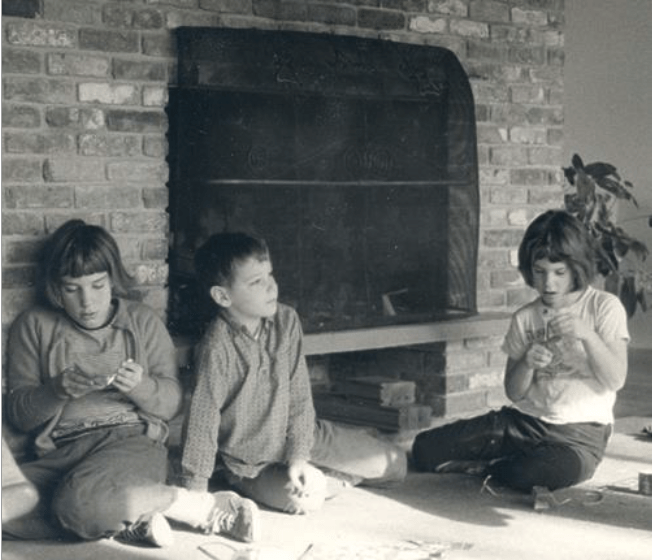
Later, I rediscovered my childhood delight in sewing and creating miniature scenes while studying illustration at the Rhode Island School of Design. A perceptive teacher recognized my interest in sewing and encouraged me to work outside of the yoke of traditional illustration mediums. By my junior year at RISD, I had stopped trying to translate the pictures in my mind’s eye through a brush or pen. I found that I was happier and energized while manipulating materials in my hands and was no longer struggling to keep in step. With a needle and thread, I could dance! For some reason, I’d been under the impression that in art school, one concentrates on serious fine art and I’d kept my interest in handcrafts underground. I used this time in school to try different ways of working and taught myself embroidery.
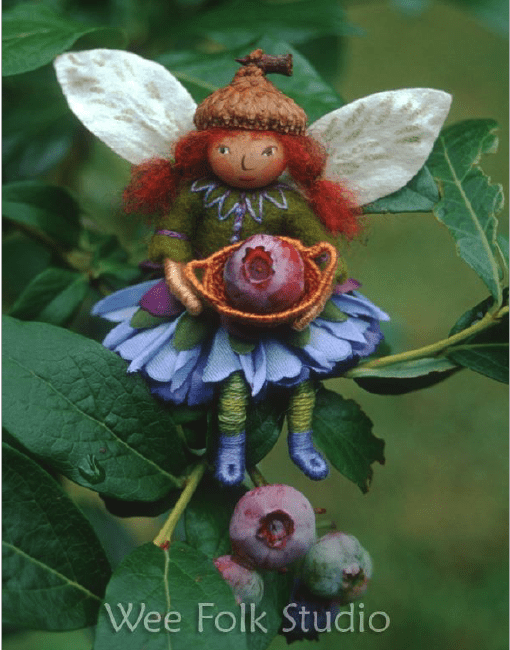
Who has been influential to you in your craft?
My children went to a school where playing with natural objects was a part of their daily experience. Waldorf Education incorporates the arts and physical activity into every lesson, imparting knowledge through the head, heart and hands. I was already inclined in this direction, but found the school’s approach fascinating and inspiring. This is where I found out about naturally dyed wool felt, which I use quite extensively.
What’s the most memorable thing you’ve ever made?
It would have to be Birds of Beebe Woods. This 24†x 30†piece was made in 2012 for a fiber art exhibition celebrating the town forest in my home town of Falmouth, Massachusetts.
I chose to portray a dozen species common to our area of New England, making them realistic enough to be recognized, but patterned and abstracted in a way that made them fun to stitch. While doing the research, I learned so much about birds and what makes each one unique. People, whether they are bird watchers or the general public feel connected to this scene in a way that hasn’t happened before. The poster and note cards of the piece are consistently among the best-selling items in my shop.
What’s the most challenging thing you’ve ever made?
From the start, I knew my 2016 piece, “Displaced†would be different. I thought of it as an operatic scene, with a chorus winding its way through a dark and ominous landscape. I wanted the figures to be timeless, so they could represent the universal plight of refugees throughout history.
I worked on it every day for 4 months. I resisted the temptation to use too many of my usual curvy lines, but emphasized sharp and jagged shapes. The poses of the figures were important, too. They were burdened and bent, going toward something, surrounded with pointy, leafless branches. This was the turning point for me as an artist. I had created what I set out to do, which was to make something that connected with the viewer on a deep emotional level.
For all of my career, I have maintained that what I make is art, in the face of long-standing attitudes that needlework and embroidery are just women’s hobbies. To counteract this belief, I’ve concentrated on making art that is strong and compelling enough to transcend its medium. I want to make art that is valued for its message and emotional resonance as well as the materials and techniques I use. All that said, I recognize that the minute detail and tactile, 3-dimensional quality of my embroidery are what draws in the viewer, so they can take in the whole experience.
What’s your biggest artwork disaster and how did you overcome it?
A few years ago I learned a lesson in the importance of using quality, archival materials. Back in 1986, when I made “Picking Peas”, I didn’t think about those kind of things. I used wire that was the right thickness and was not concerned about what kind of metal it was. It’s my style to use materials I find around, instead of buying everything new. Over the years, using found materials has helped me explore new ways of working. Odd pieces of this and that have pushed me to make bolder design decisions than I would otherwise have made if I just used thread and cloth. But, I learned that if you want your artwork to last beyond a few years or even a generation, you should be more careful about what kind of materials you use.
When I borrowed “Picking Peas†from its owner for an exhibition, I noticed brown stains around the wire pea vines. The owner hadn’t noticed the change, but I could see that rust had reared its insidious head! It didn’t help that the piece had been hanging for almost 30 years in a house right on the ocean, with salt air flowing through every open window. So, in an effort to conserve the piece, I removed the rusty wire and replaced them with new thread wrapped vines made with non-tarnish jewelry wire.
What are some of your favorite products to use for your creations?
Wool felt, variegated thread, embroidery floss, beading wire, jewelry wire, beads.
What are some of your favorite techniques?
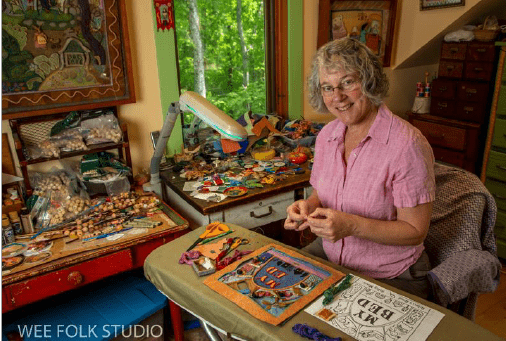
Most of my work is a combination of these embroidery stitches; blanket stitch, French knots, fly stitch, daisy stitch and chain stitch. I also like to add a 3-dimensional quality by wrapping and covering wire with thread. Other than that, I’m always experimenting, making up ways to make different parts while I’m working.
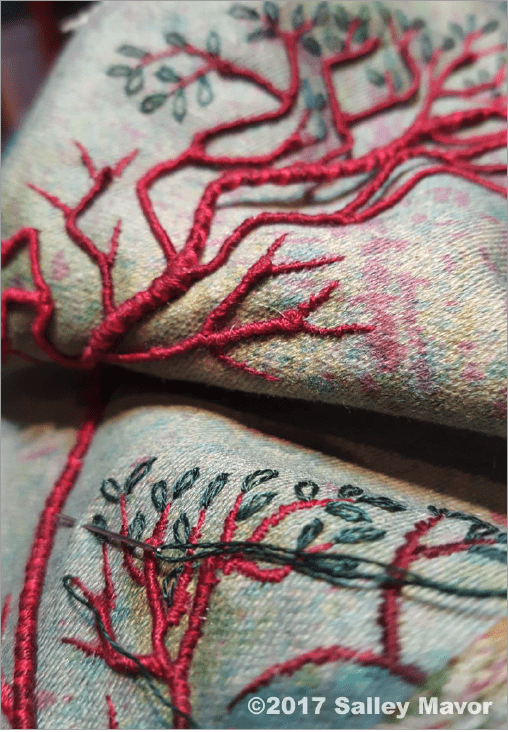
What types of sewing have you always wanted to try but haven’t yet?
I want to learn to crochet, because I can see incorporating the lacy patterns into my art. I’ll have to find someone to demonstrate the basics, though. Trying to follow instructions in a book has been frustrating. Because I’m self-taught and am used to playing around, devising ways of working on my own, it’s hard to follow written directions, even with diagrams.
Where can we see more of your work?
In my blog I document projects I’m working on, with photos and descriptions of different processes. Although they aren’t detailed instructions, people say they learn a lot from these posts.
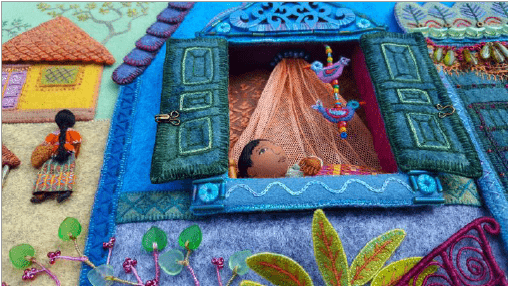
I recently completed the artwork for a new children’s picture book, My Bed, Enchanting Ways to Fall Asleep around the World, which will be released by Houghton Mifflin Harcourt Publishing Co. in Sept, 2020. My stitched illustrations will be photographed and printed in the book. Each spread will depict a child in a different culture and living environment. After the book’s release, a touring exhibition of the original embroidered sculptures will travel the country.
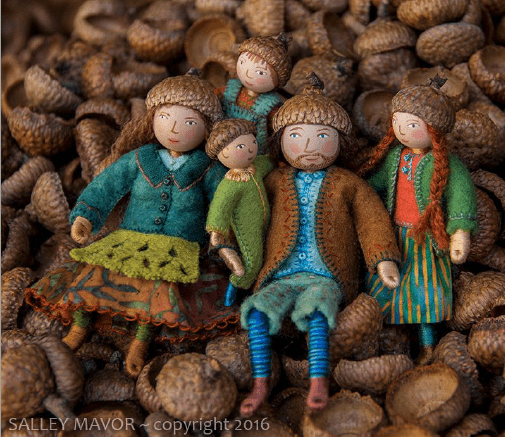
What can we use to try and create our own doll scenes?
I recently had the pleasure of trying out Sulky Cotton Petites™ Thread. The sturdy thickness worked out perfectly for edging felt borders with blanket stitch. I look forward to using both the solid colored and Blendables® for other embroidered features in my artwork, including the felt clothing for wee folk dolls.
If you want to learn how to make dolls, my book, Felt Wee Folk: New Adventures has directions and patterns for making all kinds of wee folk characters. The book is suitable for all skill levels, from the beginner who is learning the blanket stitch to the experienced embroiderer who relishes fine stitching.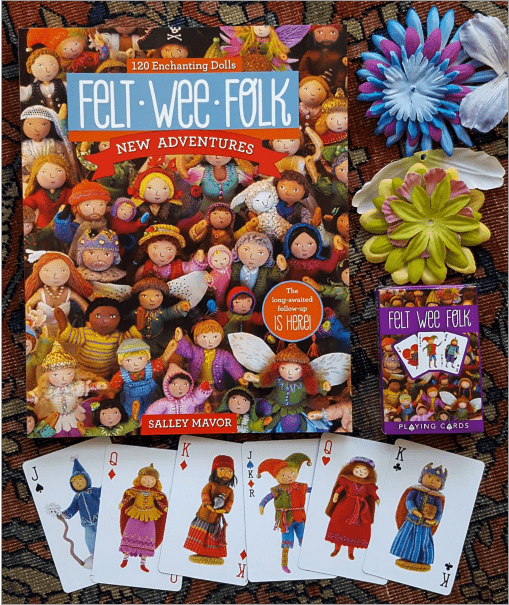

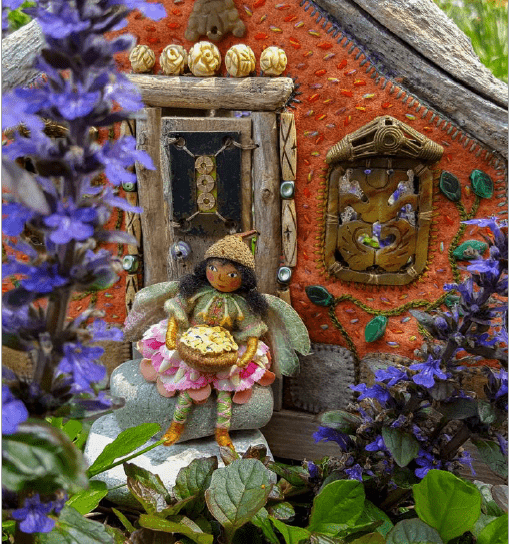
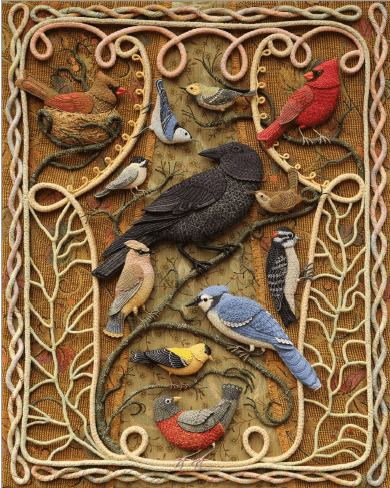
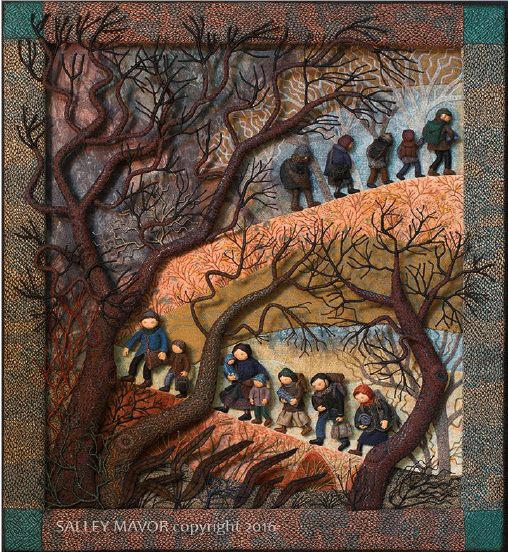
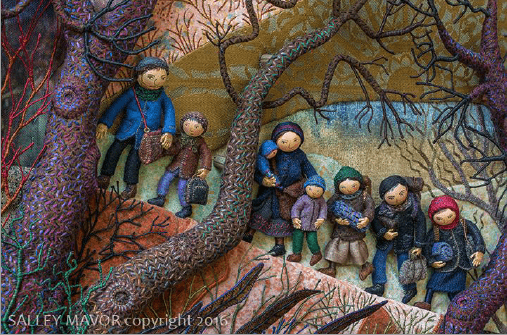
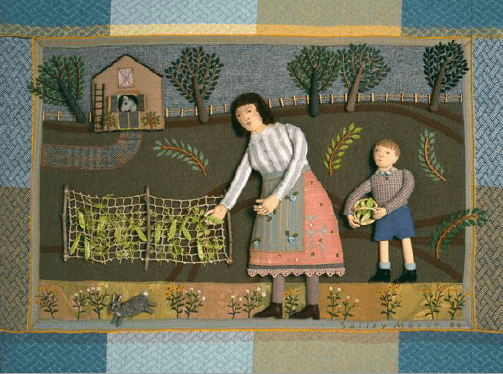

All I can say is….WOW!
stunning and exciting, no other way to explain as I read this.
I bought a print of Displaced resonating with my love for the Palestinians.